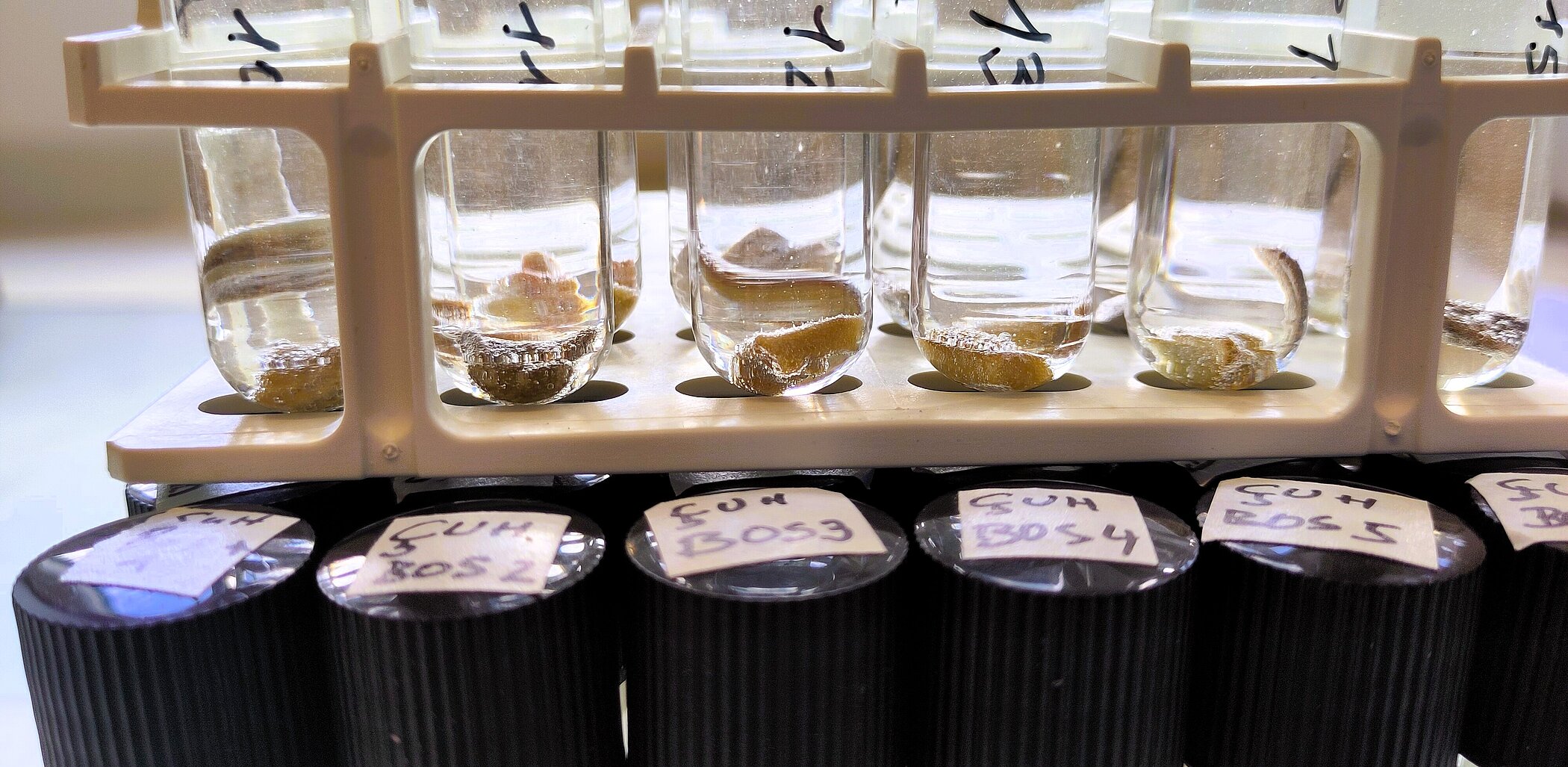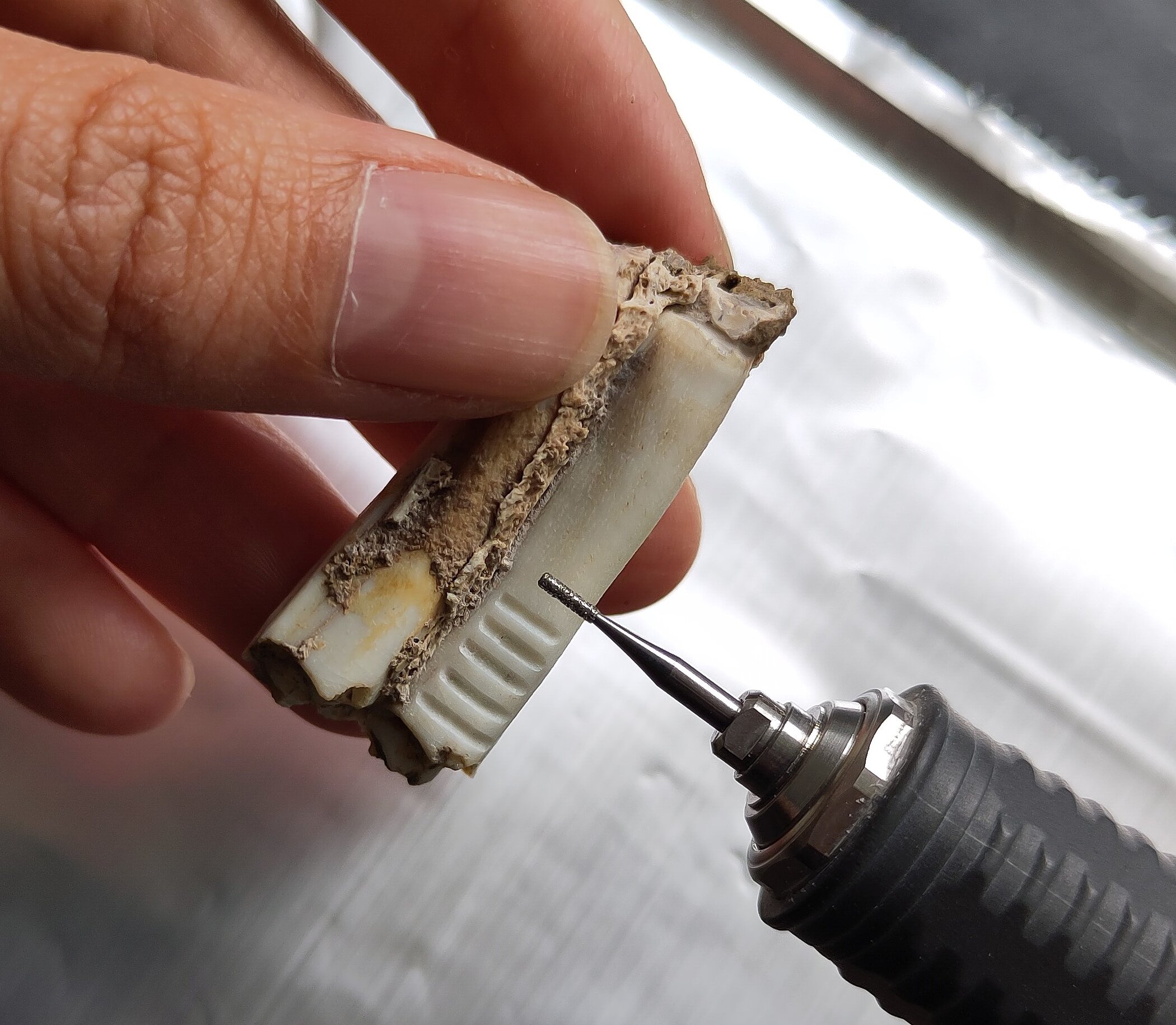Neolithic Animal Husbandry in Anatolia and Southeastern Europe
In this project, stable isotope ratio analyses of archaeological bones and teeth from Çukuriçi Höyük (Western Anatolia) and Svinjarička Čuka (Serbia) will be used to reveal new insights into Neolithic animal husbandry practices.
Domesticated animals offer the opportunity to gain meat and milk, but also manure, hides, bones, sinews, etc., in a largely predictable, controllable manner. Cattle, sheep, goats and pigs thus held a vital role for the first sedentary cultures of the Neolithic since their domestication in the Middle/Near East. By examining how humans managed their animals, we can gain insights not only into the development of past agricultural systems, but also into economic strategies and societal values and their changes during the course of the Neolithisation. Since animals and the care of animals were a much more central part of the daily lives of most people in the Neolithic compared to today, the study of animal husbandry practices additionally helps us to further our understanding of what prehistoric people likely experienced during their lives.
The analysis of both bones and teeth can reveal what animals consumed during their lives, and how this changed seasonally (in the case of teeth). In this project, collagen stable carbon and nitrogen isotope ratios (δ¹³C and δ¹⁵N) of domesticated and wild animal bones from Svinjarička Čuka (Serbia) and Çukuriçi Höyük (Western Anatolia), as well as stable carbon and oxygen (δ¹³C and δ¹⁸O) isotope ratios of tooth enamel from Çukuriçi Höyük will be analysed to reconstruct past animal diets.
These reconstructed animal diets can give information on past environmental conditions, such as the presence of a densely forested, or wide open areas. Additionally, comparisons between the diets of wild and domesticated animals and among domesticated animals can reveal human choices in how to utilise their surrounding environment to raise their stock. As pigs are omnivores, their dietary reconstructions can be particularly informative. Intensively raised pigs, fattened with animal products, can be distinguished from extensively raised pigs (e.g. free-roaming in a forest) by means of their stable nitrogen isotope ratios. Since stall-fattening pigs is a costly investment, the proportion of intensely fed pigs and the find contexts of their remains can reveal the value placed on pig raising.
Through dietary reconstructions of wild and domesticated animals from Svinjarička Čuka and Çukuriçi Höyük, this project will make a contribution towards understanding Neolithic agricultural practices, economic strategies and societal values in Anatolia and South-East Europe.

Principal investigators
Günther Grabner (University of Vienna)
Cooperations
- Vienna Institute for Archaeological Science, University of Vienna
- Jelena Bulatović, University of Belgrade, Serbia
- Wolfgang Wanek, University of Vienna
- Nils Andersen, University of Kiel
Duration
01/07/2024-31/12/2024
